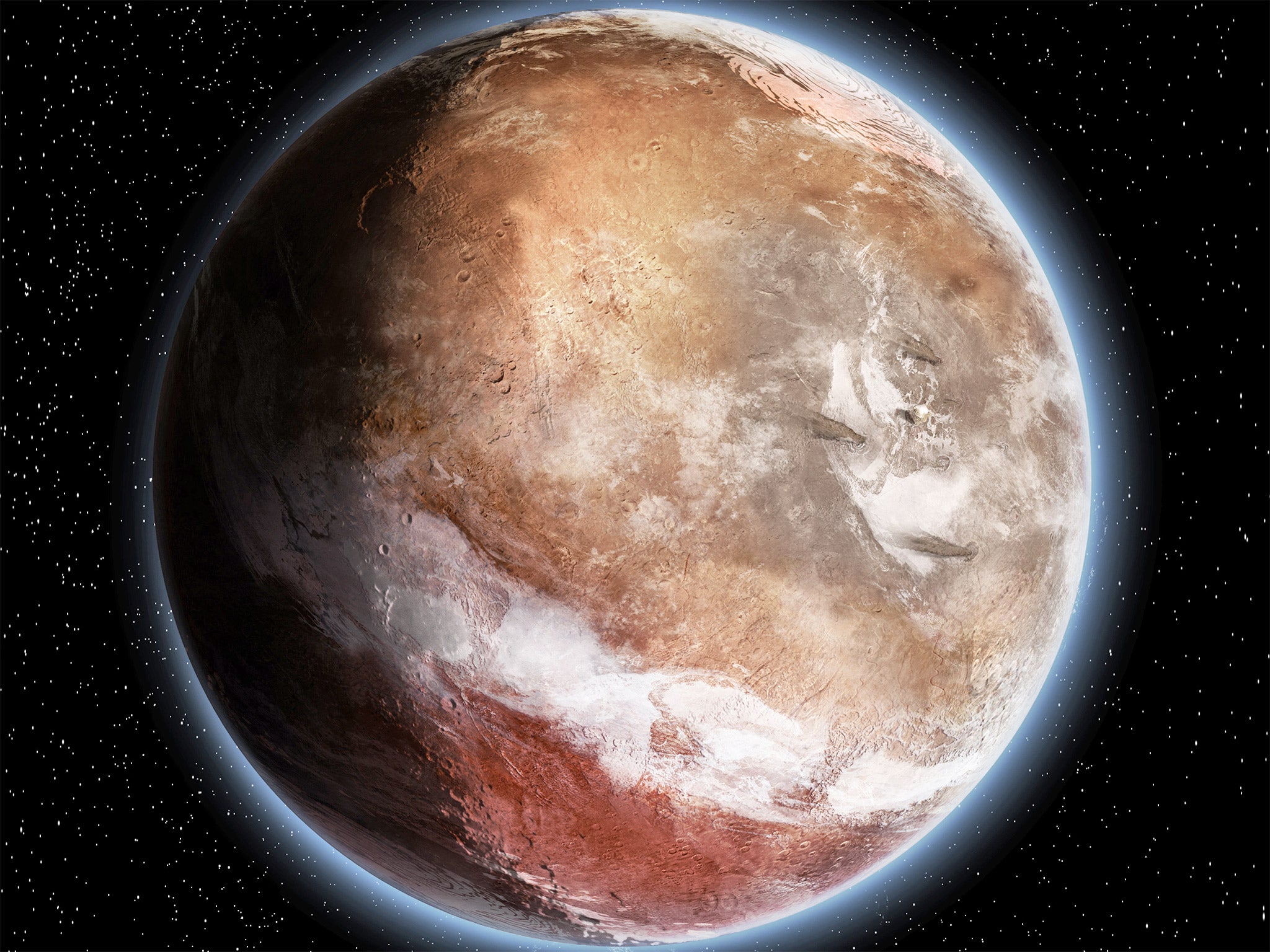Mars: Massive ancient volcanic eruption changed the face of the Red Planet, study finds
'Mars was a very different planet to the one we are able to see today'

Your support helps us to tell the story
From reproductive rights to climate change to Big Tech, The Independent is on the ground when the story is developing. Whether it's investigating the financials of Elon Musk's pro-Trump PAC or producing our latest documentary, 'The A Word', which shines a light on the American women fighting for reproductive rights, we know how important it is to parse out the facts from the messaging.
At such a critical moment in US history, we need reporters on the ground. Your donation allows us to keep sending journalists to speak to both sides of the story.
The Independent is trusted by Americans across the entire political spectrum. And unlike many other quality news outlets, we choose not to lock Americans out of our reporting and analysis with paywalls. We believe quality journalism should be available to everyone, paid for by those who can afford it.
Your support makes all the difference.A massive volcanic eruption many thousands of times bigger than anything seen on Earth, or indeed anywhere else in the Solar System, changed the face of Mars forever at a time when life on our own planet had just begun, a study has found.
The Red Planet we see today through our telescopes and binoculars has tilted on its axis by up to 25 degrees from its original position about three billion years ago, according to a detailed study of the dry Martian valleys created by ancient volcanic activity.
Scientists have calculated that the creation of the Tharsis dome, which at 5,000km in diameter is the biggest volcanic outcrop in the Solar System, shifted the centre of gravity of the entire planet so that its surface became twisted like the “flesh of an apricot around its stone”, the researchers said.
The Martian poles also shifted by between 20 and 25 degrees, which might explain why Nasa’s Phoenix lander of 2008 detected water ice at a location that was once a polar ice cap, said Sylvain Bouley of the Université Pari-Sud, and the lead author of the study published in the journal Nature.
“When the Tharsis dome formed it became so big that the planet was no longer stable. Tharsis had to shift to the equator to regain stability. It was a long process taking between 10 and 20 million years – anything shorter and we’d see tectonic faults, which we don’t,” Dr Bouley said.
The Tharsis volcanic region is much bigger than anything seen on Earth. Dr Bouley estimated that it must be about 10,000 times the size of the giant volcanoes on Hawaii, a size that allowed a dramatic and permanent change in the Martian landscape.
“Mars was a very different planet to the one we are able to see today. We need to understand how its landscape has changed over time if we are to get the best out of future missions to the planet,” Dr Bouley said.
The study was based on interpreting the original positions of the valley networks on Mars, which now have an unusual distribution but were once aligned in parallel to the Martian equator before they were twisted by the changing landscape.
Join our commenting forum
Join thought-provoking conversations, follow other Independent readers and see their replies
Comments